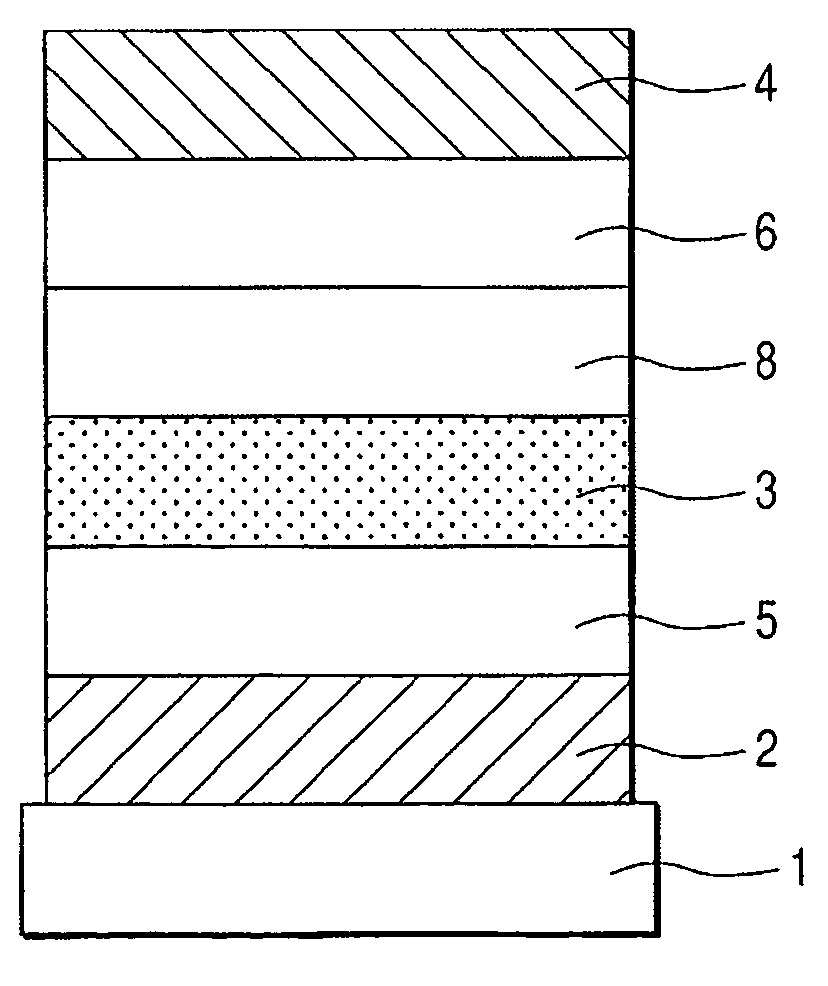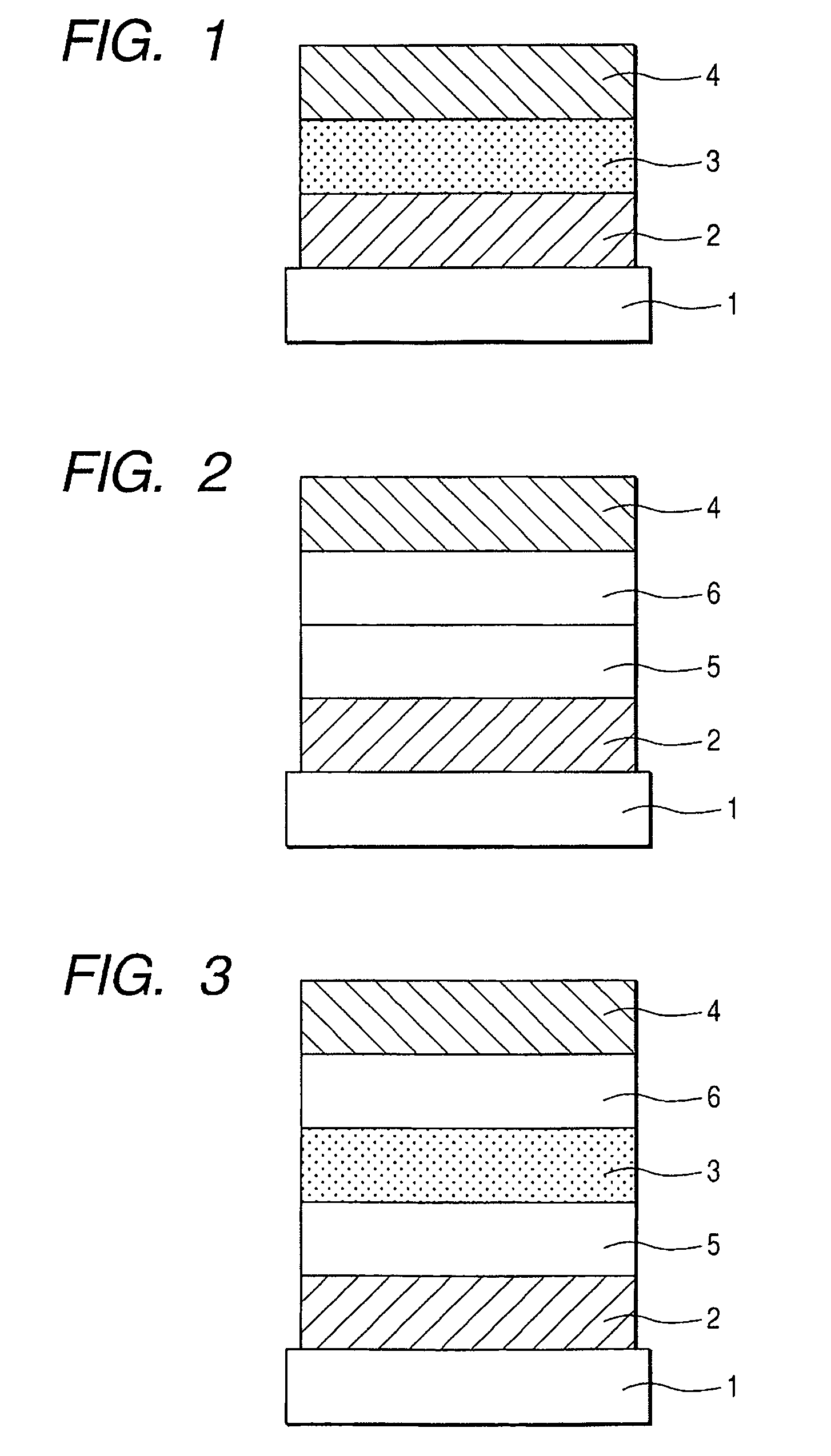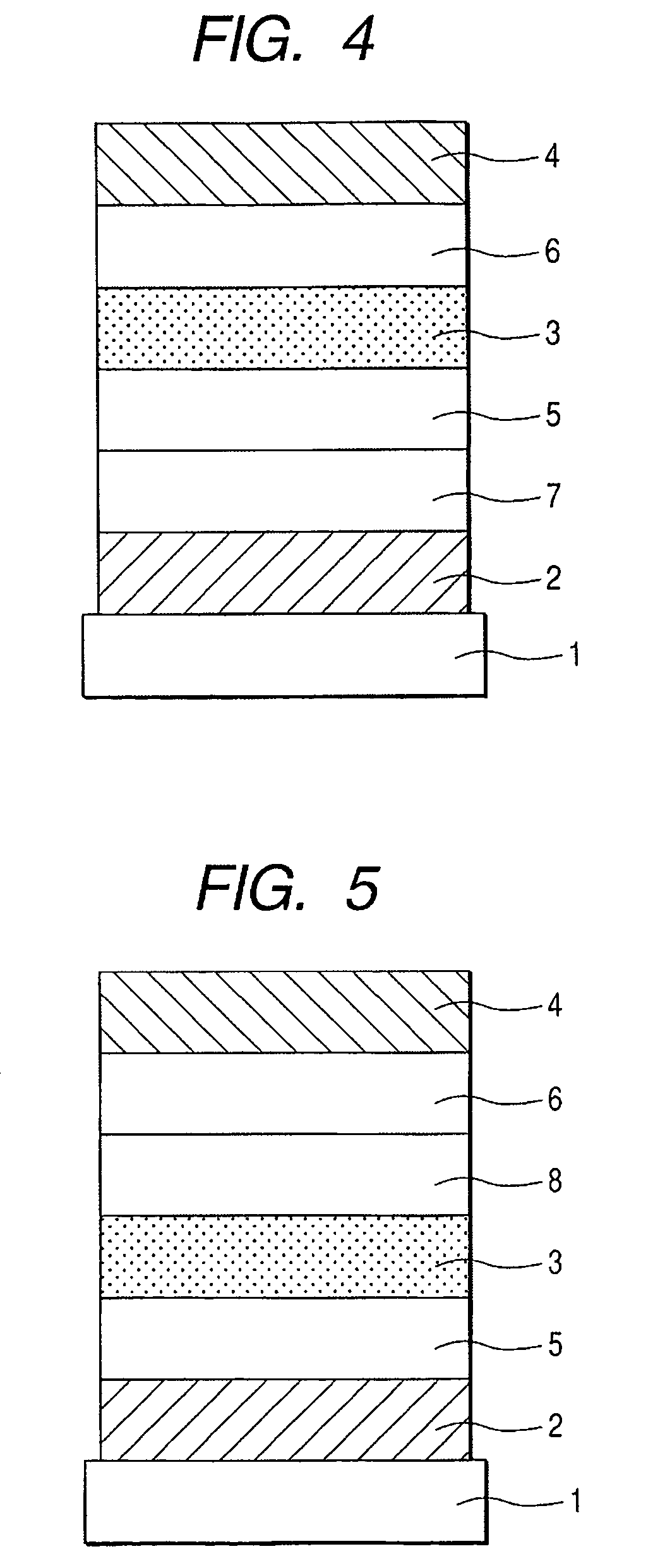Organic light-emitting device
a light-emitting device and organic compound technology, applied in the direction of discharge tube luminescnet screens, natural mineral layered products, other domestic articles, etc., can solve the problems of low emission efficiency of the device, insufficient durability life, and insufficient emission efficiency and durability life. achieve excellent stability over time, high luminance and efficiency
- Summary
- Abstract
- Description
- Claims
- Application Information
AI Technical Summary
Benefits of technology
Problems solved by technology
Method used
Image
Examples
example 1
[0104]An organic light-emitting device having a structure shown in FIG. 3 was prepared with a method described below.
[0105]A transparent conductive support substrate was prepared which had a film of indium tin oxide (ITO) with a thickness of 120 nm as an anode 2 formed on a glass substrate 1 by a sputtering method. The transparent conductive support substrate was ultrasonically cleaned sequentially with acetone and isopropyl alcohol (IPA), subsequently cleaned with boiled IPA, was dried, was further cleaned with UV / ozone, and was used.
[0106]A chloroform solution of a compound represented by the following structural formula, which was a hole-transporting material, was prepared so that the concentration became 0.2 wt. %.
[0107]
[0108]The solution was dropped on the above described ITO electrode and spin-coated at first for ten seconds at a rotation speed of 500 RPM and then for one minute at a rotation speed of 1,000 RPM, to form a film. The substrate was dried in a vacuum oven at 80° C...
examples 2 to 4
[0116]Devices were prepared by following the same procedure as in Example 1 with the exception that the exemplified compound No. 3 was used as the first compound and the compounds shown in Table 1 below were used as the second compound, and were similarly evaluated. The results are shown in Table 1.
[0117]
TABLE 1ExemplifiedcompoundNo. ofAppliedExamplesecondvoltageLuminanceEfficiencyNo.compound(V)(cd / m2)(lm / W)21074.021801132014.030501242024.0138011
[0118]Any device of Examples 2 to 4 emitted a green light having a peak wavelength in the vicinity of 520 nm originating from the exemplified compound No. 3.
[0119]In addition, the absorption spectra in ultraviolet to visible light region were measured on the devices, and as a result, the second compounds each had a larger bandgap than the first compound had in any Example.
examples 5 to 8
[0120]Devices were prepared by following the same procedure as in Example 1 with the exception that the exemplified compound No. 5 was used as the first compound, the compounds shown in Table 2 below were used as the second compound, the codeposition ratio at the time of forming the light-emitting layer was set to 25:75 (weight ratio), and 2,9-bis[2-(9,9-dimethylfluorenyl)]phenanthroline was used for the electron-transporting layer; and were similarly evaluated. The results are shown in Table 2.
[0121]
TABLE 2ExemplifiedcompoundNo. ofAppliedExamplesecondvoltageLuminanceEfficiencyNo.compound(V)(cd / m2)(lm / W)51014.07701261074.026001372014.036201482124.0162013
[0122]Any device of Examples 5 to 8 emitted a green light having a peak wavelength in the vicinity of 530 nm originating from the exemplified compound No. 5.
[0123]Furthermore, a voltage was applied to the device of Example 7 in nitrogen atmosphere for 100 hours so that the current density was kept at 30 mA / cm2. As a result, the devic...
PUM
| Property | Measurement | Unit |
|---|---|---|
| applied voltage | aaaaa | aaaaa |
| thickness | aaaaa | aaaaa |
| thickness | aaaaa | aaaaa |
Abstract
Description
Claims
Application Information
 Login to View More
Login to View More - R&D
- Intellectual Property
- Life Sciences
- Materials
- Tech Scout
- Unparalleled Data Quality
- Higher Quality Content
- 60% Fewer Hallucinations
Browse by: Latest US Patents, China's latest patents, Technical Efficacy Thesaurus, Application Domain, Technology Topic, Popular Technical Reports.
© 2025 PatSnap. All rights reserved.Legal|Privacy policy|Modern Slavery Act Transparency Statement|Sitemap|About US| Contact US: help@patsnap.com



